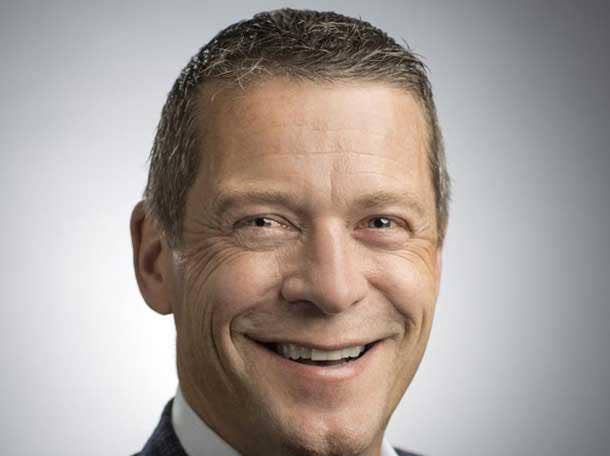Equinix CEO Meyers On Public Cloud Acceptance Of Hybrid IT And How Partners Enable Digital Transformation
Equinix CEO Charles Meyers speaks with CRN about his views of the evolving cloud landscape, the role of partners in delivering hybrid infrastructure to large enterprises and Equinix's strategy to further expand its business.

Equinix CEO's Hybrid Cloud Outlook
Equinix is far and away the world's largest operator of data centers.
The Redwood City, Calif.-based company leases out out power and rack space for serversin more than 200 interconnected facilities across 24 countries. For many large enterprises, that infrastructure is their entry point into a hybrid and multi-cloud world.
Equinix was founded on the vision of co-locating infrastructure at telecommunications hubs, enabling neutral cross-connects across major networks. The company later introduced a Cloud Exchange that made its facilities seamless connection points to hyper-scale public cloud operators, and more recently, the Equinix Cloud Exchange Fabric, which brings to the mix software-defined networking at global scale.
The omnipresence of Equinix data centers and the company's close alliances with network and public cloud providers give CEO Charles Meyers, who took the helm of the company last September, a unique view of the evolving cloud landscape.
Meyers spoke to CRN about that landscape, the role of the channel in delivering hybrid infrastructure to large enterprises, and Equinix's strategy to further expand its business in an era of digital transformation.
"For us, it revolves around our differentiation, which is global reach and the most comprehensive interconnection platform," Meyers told CRN in an exclusive interview.
"That's the unique value that we bring to folks. It's taken hold in terms of how customers are thinking about Platform Equinix as a digital transformation platform."
On Cloud Connections
We have very good relationships with the clouds, often doing joint sales activities, particularly at the large end of the enterprise market. And we've got relationships where a significant number of the cloud on-ramps continue to live in Equinix facilities around the world.
As people architect and want to house their own private infrastructure, they want to do that in a place they can connect to public clouds cost-effectively and with good performance.
Customers are seeing that different cloud providers meet different needs for them. Some are better at certain use cases than others. They want the flexibility to move workloads. And also, they don’t want to get locked in to any one cloud.
On A Hybrid, Multi-Cloud World
What's driving the current interconnection momentum for us is really the movement toward hybrid and multi-cloud as the architecture of choice.
The customers have made it clear that hybrid is their preferred architecture. So rather than stick their head in the sand and pretend that's not the case, often [public cloud providers] are partnering with us and asking, 'What's the right architecture?'.
A few years ago, those major providers were reluctant to talk about hybrid cloud.
That's changing now, you can see—AWS with Outposts, Google with what they're doing with Kubernetes, and Microsoft have always had a lot of activity given their broader business with hybrid cloud.
So many of our channel partners are working with us and the larger clouds to achieve that end-state. Using Platform Equinix is a core component of their hybrid cloud agenda.
On Channel Relationships
More than 20 percent of our bookings are through the channel now.
[Partners are] delivering what's really required to solve customer problems at the end of the day, bringing together some of what Platform Equinix delivers, often combined with value from other players.
MSPs and network services providers, many have exited the co-location business and now are looking at Equinix as a key partner to fill out their solution set.
But the people we see most successful with Equinix are ones that have a richer incremental value proposition. The days of being able to take something, mark it up a little, that business model is under strain. The more successful partners are the ones that bring richer value-add to the customer.
On Digital Transformation
What we're seeing is digital transformation, how people are thinking about that, is it's becoming a board-level priority for companies. Fundamentally, industries are being reshaped on the basis of competition and digital transformation is a big part of that.
The thinking about how customers interact with their customers, and their supply chains, is driving this digital transformation wave. This old-school enterprise IT architecture, and bringing the network back to it, is breaking down in this more distributed cloud-first world.
Their architectures need to be global, highly distributed, and tend to be cloud-first. Almost all enterprises and services providers are thinking hybrid and multi-cloud as the architecture of choice.
On The Digital Edge
[Enterprises] want to position that architecture at the digital edge because of their need to interact with a range of counterparties, and see benefits in performance, cost, security, compliance, flexibility. That's why they're honing their architecture at the digital edge.
We’ve just completed supporting inter-region connections between all of our 37 ECX Fabric sites, and now have 1,400 customers using that. Last quarter, we reported almost 15,000 virtual connections on our fabric in addition to more than 300,000 physical interconnects.
What ECX Fabric allows is for people to buy a port on the fabric—and close to real-time provision capacity from cloud endpoints, whether Google, AWS, Microsoft Azure or many other providers we have on the fabric—and adapt to moving workloads, temporary and permanent, and have a lot more flexibility in how they're crafting their architecture.